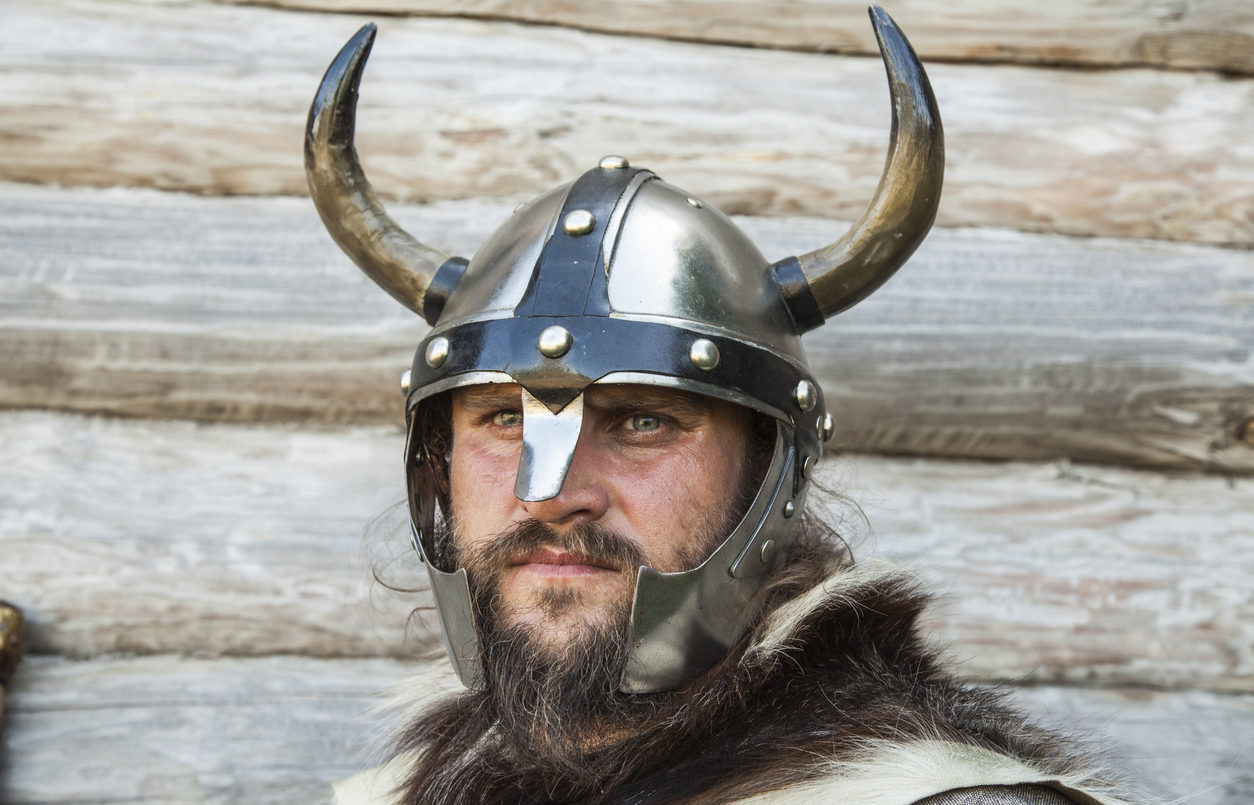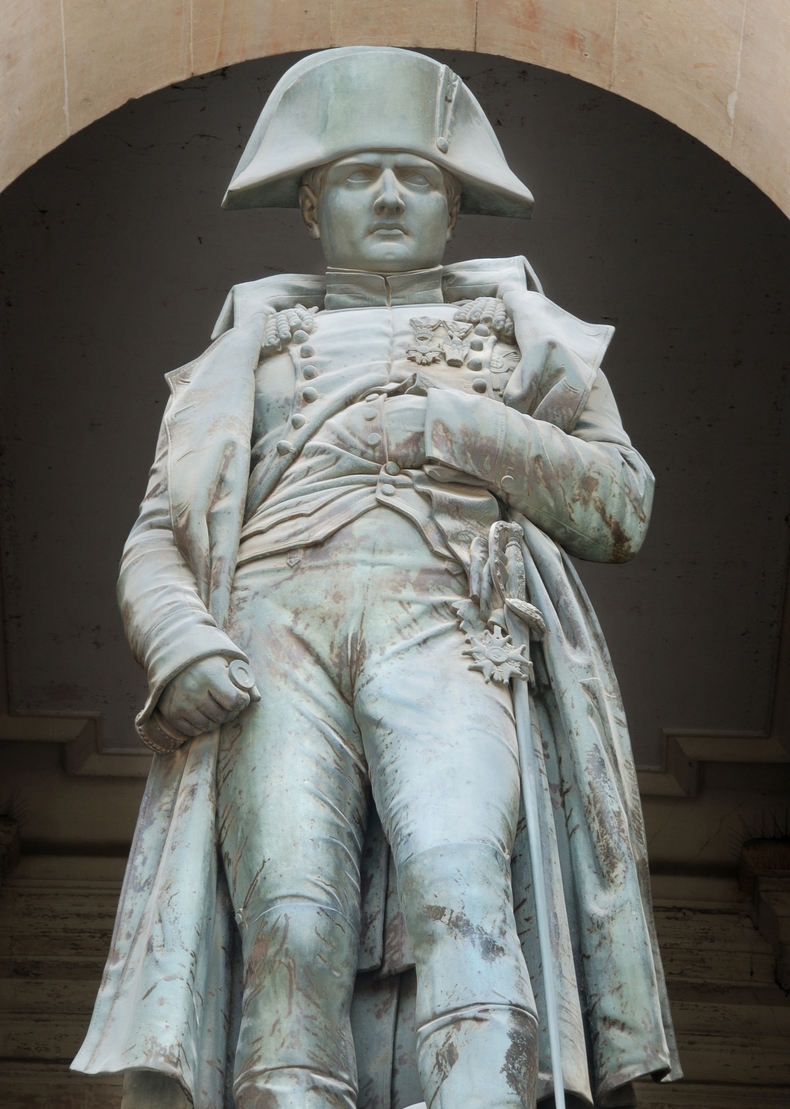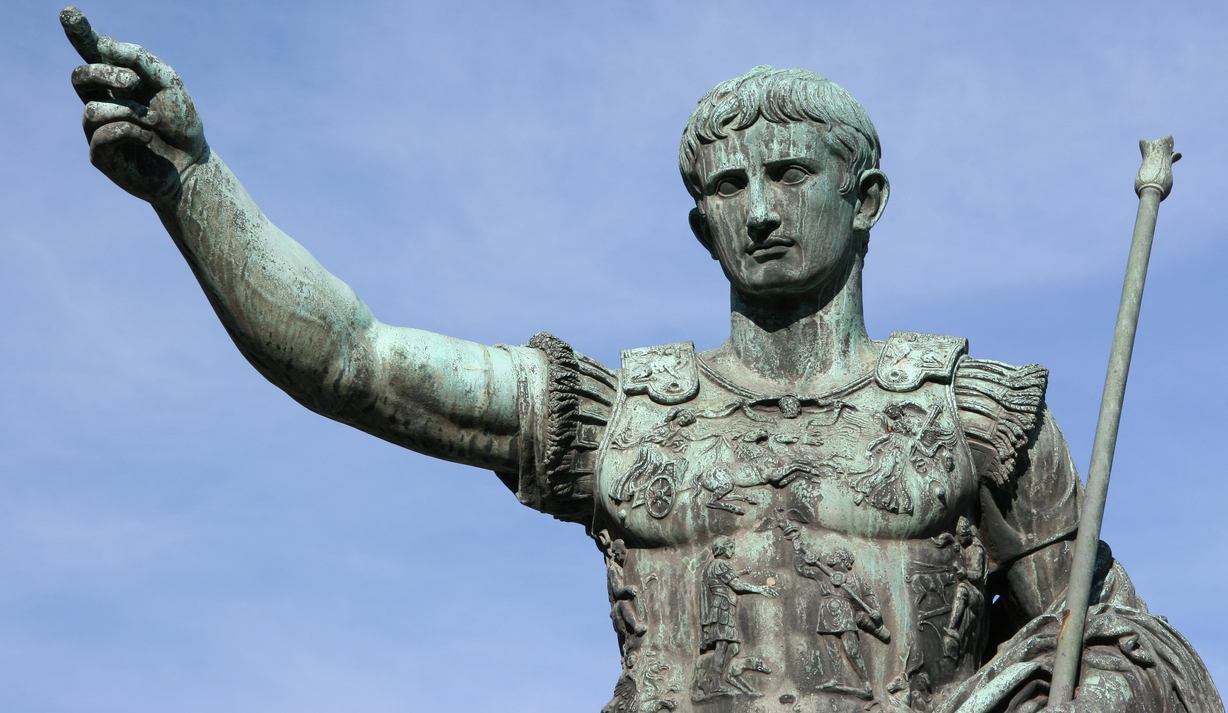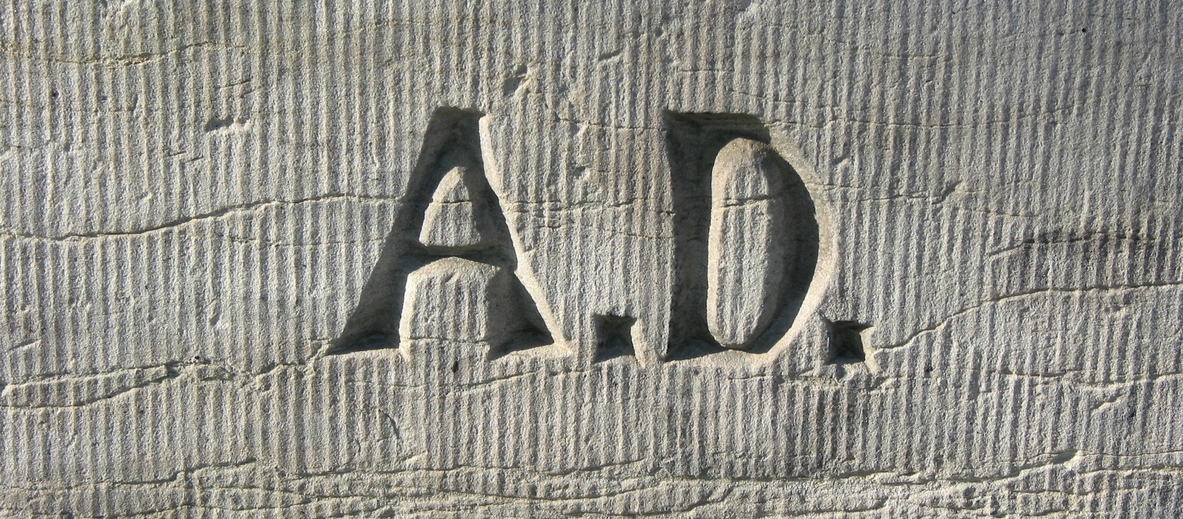Background
History is filled with lots of stories, which makes it very interesting to learn about. But among those stories, myths are also sometimes included. A myth is a popular story that was made up in the past to explain natural events or to justify beliefs or social customs. If a belief or explanation is described as a myth, it means many people believe it, but it is actually untrue. [1]

a world map and compass
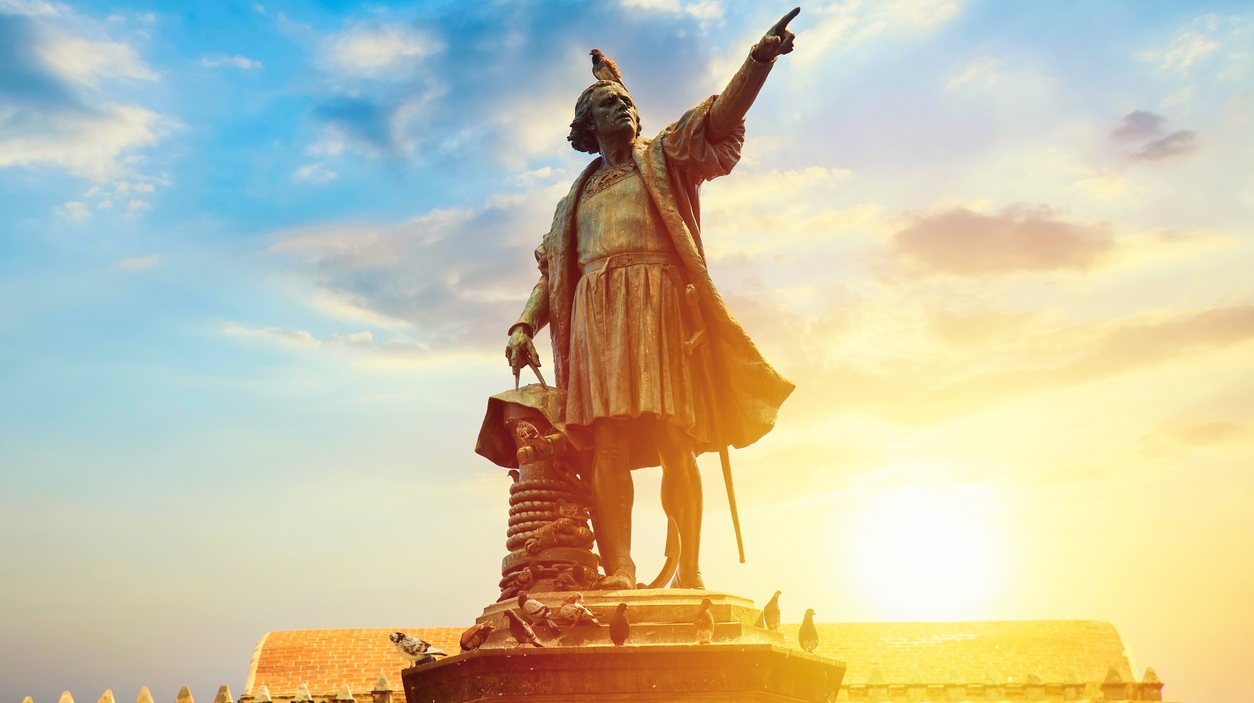
statue of Christopher Columbus
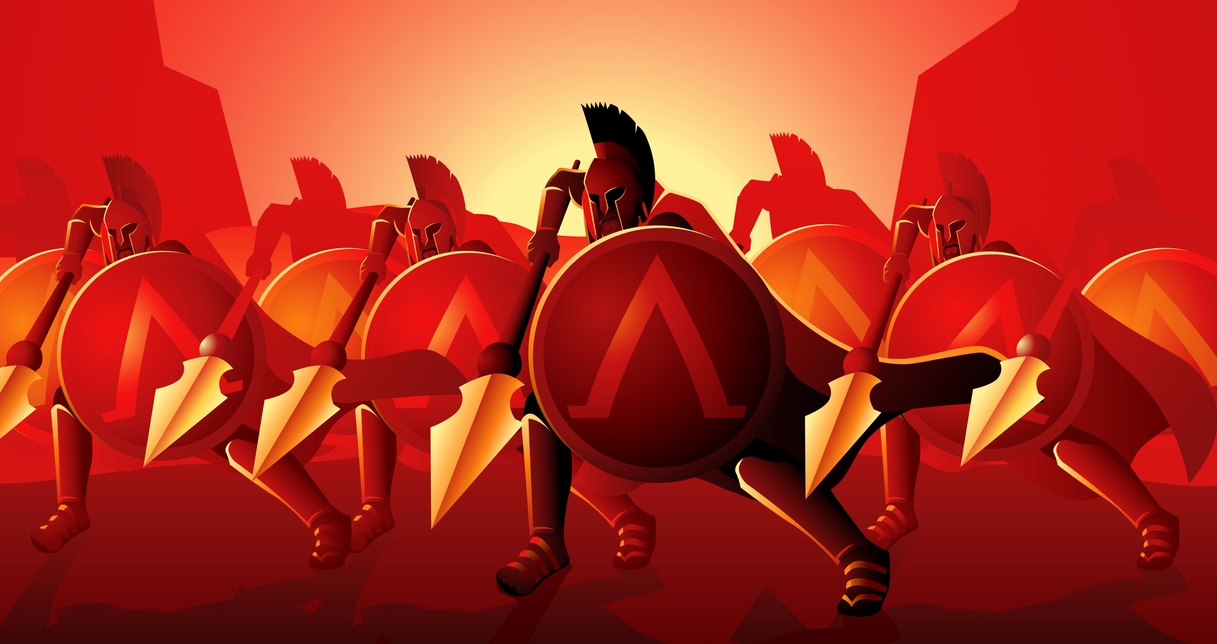
an illustration of the popular 300 Spartans

at the Bastille Square in Paris
It is true that history can be prone to hearsay, and a lot of things that most of us hear or believe are not true. However, they have been told to people so many times from one generation to another that many of us take it and never try to know the truth. [2] The main goal of education is to debunk miseducation. This means that it is essential to spot and correct the many myths originating from folk wisdom, word of mouth, and the internet. [3] Therefore, in this post, we are going to tackle some of the most widespread history myths that most of us believe in but are actually not true. Below are the popular history myths debunked.
Myth #1: Only 300 Spartans held off the Persians at Thermopylae for three days.
If you’ve watched the film 300, which told the fantastical story of the battle of Thermopylae in 480 BC, then you probably believe that only a handful of Spartans, 300 to be exact, fought the whole army of Persia for three days. However, this myth is not very true.
There were indeed only 300 Spartan soldiers at the battle, but they were not alone. The Spartans formed an alliance with other Greek states. They had around 4,000 or more allies that fought alongside them. It is assumed that the number of ancient Greeks was close to 7,000. The size of the Persian army was more likely between 100,000 and 300,000, which means the Greeks were still against overwhelming odds. But they were not only 300. [4]
Myth #2: Queen Marie Antoinette said, “Let them eat cake.”
“Let them eat cake” was one of the most popular quotes in history. According to the story, around 1789, when Marie-Antoinette, the bride of France’s King Louis XVI, was told that Parisian peasants could not afford bread, she supposedly said, “Qu’ils mangent de la brioche” or “Let them eat cake” in English. That remark made her a hated symbol of the decadent monarchy and powered the revolution that would cause her to lose her head after several years. [5] But did she really say that?
The quick answer to this is no. Marie Antoinette did not say “Let them eat cake” when confronted with the news that Parisian peasants could not afford bread. But why do we all believe that she did say it? Well, this is because it was revolutionary propaganda that was used decades before Queen Marie to malign the characters of the high-ups and to make them look indifferent toward the suffering of the common people. [2]
Myth #3: Mussolini made the trains run on time.
This is a popular myth that you will hear from exasperated commuters or people who stress the benefits of exercising the absolute powers of authoritarians as they are not satisfied with the current system or pattern. However, the truth is very far from this myth. During and after World War I, the train system was in sorry shape. Even in the regime of Italian dictator Benito Mussolini, trains did not run on time.
Those people who said and believed it was either influenced by fascist propaganda or were swept by the bombast of Mussolini. It’s because Mussolini was quick to take credit for others’ works and wanted to be famous. [2]
Myth #4: Medieval people were flat-earthers.
There is a popular myth about the Middle Ages saying that medieval people thought the earth was flat. There is even another claim that Columbus faced opposition to his attempt to find a western route to Asia as people thought the earth was flat and he would fall off. However, these are not true. The truth is that Columbus and many medieval people knew the earth was round.
By the Middle Ages, there was a prevalent belief that the Earth was a globe among the educated. Columbus did face disagreement on his voyage, but not because they thought he would drop off the edge of the world. It was because people believed that he predicted the globe to be too small and that he would run out of provisions before he made it around to Asia. Medieval people did not fear the edges of the world, but the world being too big and round for them to cross using the technology they had back then. [6]
Myth #5: The Vikings wore helmets with horns.
The Vikings were often shown in ads, television shows, films, and comic books as large hairy men wearing horn helmets, raiding tribes, and destroying houses. But let’s get this out of the way straight off. There is no evidence that the Vikings wore horned helmets, and nothing like this has ever been found in any archaeological dig. They could’ve worn helmets, but they would have been simple skull caps made to protect the head from impact. Plus, wearing horns on your head during a battle is not helpful when you are being struck with swords, axes, or clubs.
The idea of Vikings wearing horned helmets came from the 19th century, but it was Richard Wagner’s “The Ring Cycle” that seared it into the modern imagination. It was a cycle of four operas by the German composer that was based solely on characters from the Norse sagas. Carl Emil Doepler (1824-1905), a costume designer, created horned helmets in the 1870s for the Viking characters. After that, the myth was born. Later on, a lot of cartoonists, filmmakers, and artists have continued this fantasy up to this day. [7]
Myth #6: Thomas Edison was the inventor of the light bulb.
In contrast to popular belief, the light bulb, which is a mainstay in modern life, had been invented years before Thomas Edison ever created one. This means that Thomas Edison was not the inventor of the light bulb. His contribution was to improve it as the previous versions were not reliable, expensive, and did not last long. At the time, there were around 20 other independent inventors that were trying to build the better light bulb along with Edison.
The version of the light bulb that Edison made improved on the filament, used a sealed vacuum bulb and had a lower voltage compared to the others. He made a marketable product that could last for hours. The design that Edison made was a marketable product that could last for hours. [3]
Myth #7: Nero fiddled while Rome burned.
A great fire ravaged Rome for six days from July of 64 A.D. It destroyed seventy percent of the city and left half of its population homeless. Based on a well-known expression, the emperor of Rome at the time, the decadent and unpopular Nero, “fiddled while Rome burned.” This expression has two meanings. One is that not only did Nero play music while his people suffered, but he was also an ineffectual leader during a time of crisis. [8]
It was easy to blame Nero as he had many enemies and was remembered as one of the sadistic and cruelest leaders in history. However, there is a problem with this myth. The fiddle did not exist in ancient Rome as it was not developed until the 11th century, which was around a thousand years after Nero. He may have been guilty of many things, but the story of him fiddling while Rome burned is just a myth with no evidence.
Myth #8: Ferdinand Magellan circumnavigated the globe.
About five hundred years ago, Ferdinand Magellan, a Portuguese, started a historic journey to circumnavigate the globe. This seems quite simple, right? However, the problem is that there is a contradiction to this. First, he was Portuguese but sailed on behalf of Spain. His expedition was the first to set sail around the world, but he did not end up circling the globe himself. Nonetheless, it is clear that his 1519 expedition changed the world forever. [9]
In 1519, Magellan set sail from Spain with five ships to find a western route to the Moluccas. It may be true that his fleet circumnavigated the globe, but he was not included. [9] He only made it halfway as he was killed in the Philippines during a fight with the locals on the island of Mactan. His expedition may have succeeded, but he himself did not. He planned and started the expedition but, only 18 of his 260 men returned to Spain. [3]
Myth #9: More people are alive today compared to those who have died throughout history.
It was believed that from the time the Egyptian pyramids were built, about six billion people have died, which is about a billion less than the population of Earth today. However, even if the most conservative dating methods for the age of the earth were used, the pyramids of Egypt were still a relatively “late” event. This means that before that, there would have been millions or perhaps billions of people who have died. It might be true that life expectancy is generally better in many parts of the world, but not by that much. [3]
Myth #10: Christopher Columbus discovered the Americas.
Every October 10th, Columbus day is celebrated by the Americans. It is an annual holiday that commemorates the day on October 12, 1492, when Christopher Columbus, an Italian explorer, officially set foot in the Americas and claimed the land for Spain. It has been a national holiday in the U.S. since 1937.
With this, it is also commonly believed that Columbus discovered America. However, it is more appropriate to say that he introduced the Americas to Western Europe during his four voyages to the region from 1492 to 1502. We can also say that he made way for the massive influx of western Europeans that would ultimately form several new nations, such as the United States, Canada, and Mexico. However, it is not true that he discovered America as there were plenty of people already here when he arrived. [10]
Historians agree that Leif Erickson first landed on the Canadian shores around 500 years before Columbus arrived in the Bahamas. He was converted by King Olaf I to Christianity in what is now Norway. Then, he set sail as an explorer and merchant, as well as to evangelize unsaved nations. He attempted to reach Greenland, but sailed off course and landed in Helluland, Markland, which he called Vinland. He spent one or two seasons in North America before he returned to Greenland, where he later ascended to the throne. Therefore, it can be possible that others may have preceded Columbus and even Erickson in discovering the Americas. [3]
Myth #11: Most men in the colonial era wore wigs.
In popular culture, many men in the 18th century are portrayed wearing curly white wigs as part of their daily looks. While they were indeed a fashionable trend in colonial America in the 18th century, the truth is that not a lot of men wore them. In fact, only about 5% of the population wore wigs. Why? It’s because they were expensive. They were mainly worn by lawyers and statesmen and were not suited for blue-collar jobs. Most people back then also could not afford a wig even if they wanted to wear one. [3]
Myth #12: Emperor Napoleon was short.
Napoleon Bonaparte was one of the most instantly recognizable cultural icons in the world. He is usually portrayed with one hand in his waistcoat, short, and aggressive. His allegedly small stature and fiery temper have inspired the term “Napoleon Complex.” It was a popular belief that short men tend to compensate for their lack of height through dominant behavior and belligerence. But the question is, was Napoleon really short? [11]
This myth is also not true. Napoleon was a bit above 5’5”, which was a pretty average height for the time. The idea that he was short came from British cartoonist James Gillray, who began illustrating Napoleon as very short, and other cartoonists followed his illustrations. [12]
Myth #13: Adolf Hitler was a socialist.
Modern political thinkers present Adolf Hitler as a socialist. However, this is only a myth, and they may possibly be working at the destruction of fascist or socialist ideology. The name of the Nazi Party was the National Socialist German Worker’s Party. Therefore, Hitler did claim to be a socialist during his lifetime. However, as a dictator, he banned the socialist and Communist political parties of Germany as he implemented some social policies. The truth is that Hitler worked against Communism and socialism. He hated Communism and invaded Russia to eliminate Communist ideology. [2]
Myth #14: Julius Caesar was the first person to be born via cesarean section.
Opposing popular belief, Julius Caesar was not born via C-section. While the technique for delivering babies by C-section was popular in ancient Rome, doctors back then only used it in risky cases when there was no hope for the mother to survive and they had to save the life of the child. Therefore, the myth that says Julius Caesar was born via C-section is not true, as his mother, Aurelia, lived a long and vigorous life after his birth. [13]
Myth #15: Albert Einstein was bad at math.
Whenever the words “scientific genius” come up in conversations, Albert Einstein’s name is never far behind. That’s why it is quite difficult to believe the myth that says Einstein failed grade school math. The rumor that he failed a math test in fourth grade is untrue. The trouble came when he took the entrance exams for the Federal Polytechnic School in Zurich, Switzerland. He was two years younger than the other applicants, but he performed well on the math test. He excelled in math and physics but performed poorly in non-scientific subjects. With this, he was not accepted. [14]
Myth #16: Everyone was killed at the Alamo.
The Battle of the Alamo is probably the most popular battle in the history of the United States. It was Texas’ war for independence from Mexico, which lasted thirteen days. This declaration has inspired many Americans ever since to show the same level of sacrifice and valor shown by those who fell at the Alamo. On the morning of March 6, 1836, General Santa Anna and his Mexican army slew all of the Alamo’s defenders.
However, contrary to popular belief, not all of those inside the walls of the Alamo died. There were around a dozen women and children who survived. In fact, they were present during the 12-day siege and were spared as non-combatants. [3]
Myth #17: Medieval people ate potatoes.
When Medieval people are being portrayed in television shows and movies, they are shown to be eating potatoes or meals made out of potatoes. However, this is only a myth. Potatoes are native to the Americas and were not brought to Europe until the mid-1500s. Therefore, it means that there were no potatoes in Europe in the Middle Ages, and no one in Europe ate them before then. [12]
Myth #18: Corsets were basically torture devices.
It is also a popular myth that corsets were used as torture devices that move organs around and make it unbearable for women to go about their daily lives while wearing one. However, when you look at the facts and their history, it is far from the truth. Corsets have been worn for eras by every part of society. They were not actually for decreasing the size of the waist drastically. They mainly provided bust support, a flattering shape, and a smooth line for the fabric to lay over.
Corsets were comfortable, and women could work while wearing them. Also, they did not cause women to faint, and there were different types for various types of work. Tight-lacing of corsets was an optional trend in the 1840s, but no one had their ribs surgically removed so they could wear their corsets better as surgery was not safe enough back then. [12]
Myth #19: The storming of the Bastille freed hundreds of political prisoners.
The Bastille was a royal fortress and prison that had come to symbolize the tyranny of the Bourbon monarchs. On July 14, 1789, it was stormed. According to a myth, hundreds of political prisoners were freed during this event. However, this is not true. Only seven prisoners were freed, and there were four forgers, the Comte de Solages, and two lunatics. One of them was an English or Irish man named Major Whyte, who wore a waist-length beard and thought he was Julius Caesar. [15]
Myth #20: A.D. means After Death.
It is a fact that B.C. is an abbreviation for Before Christ. However, it is not true that A.D. is an abbreviation for After Death. It instead stands confusingly for the Latin phrase “Anno Domini,” which translates to “in the year of the Lord” or the year Jesus was born in English. With this confusion, many biblical scholars, historians, and archeologists prefer to use the less sectarian designations “before the Common Era” (B.C.E) and “the Common Era” (C.E.). All of the abbreviations can also be spelled without their periods. [16]
Conclusion
These are some of the popular history myths that most of us may have believed in but were not really true. Some of them were indeed surprising as many believed them for a long time in their lives. Some might still believe them at this very moment. After learning about these debunked myths, we can say that there is truly much false information about history that is circulating through folk wisdom, word of mouth, the internet, and other mediums. Therefore, it is always important to be aware of where we are getting our information from and to always try to do more research, particularly if you are not sure whether or not the data you got is true.
References
[1] Collins Dictionary, E. (n.d.). Myth definition and meaning: Collins English dictionary. Myth definition and meaning | Collins English Dictionary. Retrieved July 22, 2022, from https://www.collinsdictionary.com/dictionary/english/myth
[2] Israrkhan. (2021, May 4). 8 famous historical myths debunked. Medium. Retrieved July 22, 2022, from https://medium.com/lessons-from-history/8-famous-historical-myths-debunked-4f8a08f37796
[3] TBS, S. (2022, January 6). 25 popular history myths debunked. TheBestSchools.org. Retrieved July 22, 2022, from https://thebestschools.org/magazine/25-popular-history-myths-debunked/
[4] Adhamy, A. (2022, April 7). Were there really only 300 spartans at the Battle of Thermopylae? HistoryExtra. Retrieved July 22, 2022, from https://www.historyextra.com/period/ancient-greece/spartans-battle-thermopylae-how-many/
[5] History.com, S. (2012, October 24). Did Marie-Antoinette really say “Let them eat cake”? History.com. Retrieved July 22, 2022, from https://www.history.com/news/did-marie-antoinette-really-say-let-them-eat-cake
[6] Wilde, R. (2019, July 22). Medieval times and the flat earth theory. ThoughtCo. Retrieved July 22, 2022, from https://www.thoughtco.com/did-medieval-people-believe-in-a-flat-earth-1221612
[7] Ramirez, D. J. (2022, July 4). “Vikings didn’t wear horned helmets,” plus 7 more viking myths busted. HistoryExtra. Retrieved July 22, 2022, from https://www.historyextra.com/period/viking/historical-fact-check-vikings-myths-busted-did-wear-horned-helmets-violent-barbarians/
[8] History, S. (2012, November 20). Did Nero really fiddle while Rome burned? History.com. Retrieved July 22, 2022, from https://www.history.com/news/did-nero-really-fiddle-while-rome-burned
[9] Blakemore, E. (2021, May 3). Magellan was first to sail around the world, right? think again. Culture. Retrieved July 22, 2022, from https://www.nationalgeographic.com/culture/article/magellan-first-sail-around-world-think-again
[10] Enochs, K. (2016, October 10). The real story: Who discovered America. VOA. Retrieved July 22, 2022, from https://www.voanews.com/a/who-discovered-america/3541542.html
[11] McIlvenna, U. (2019, November 13). Was Napoleon Short? origins of the ‘napoleon complex’. History.com. Retrieved July 22, 2022, from https://www.history.com/news/napoleon-complex-short
[12] Marder, H. (2021, December 15). People are debunking common history myths and I haven’t learned so much since high school. BuzzFeed. Retrieved July 22, 2022, from https://www.buzzfeed.com/hannahmarder/common-history-misconceptions-debunked
[13] Prateek, D. (2021, June 30). Julius Caesar was not born via C-section, and 9 other little-known facts about him. Medium. Retrieved July 22, 2022, from https://historyofyesterday.com/julius-caesar-was-not-born-via-c-section-and-9-other-little-known-facts-about-him-26005a0d39c9
[14] Kruse, C. (2019, March 7). Did Einstein really fail math? Ripley’s Believe It or Not! Retrieved July 22, 2022, from https://www.ripleys.com/weird-news/did-einstein-really-fail-math/
[15] Tamara. (2012, July 22). How many prisoners were freed by the storming of the Bastille? www.history notes.info. Retrieved July 22, 2022, from https://historynotes.info/how-many-prisoners-were-freed-by-the-storming-of-the-bastille-1496/
[16] Brians, P. (2016, May 16). Washington State University. Common Errors in English Usage and More AD Comments. Retrieved July 22, 2022, from https://brians.wsu.edu/2016/05/16/a-d/






